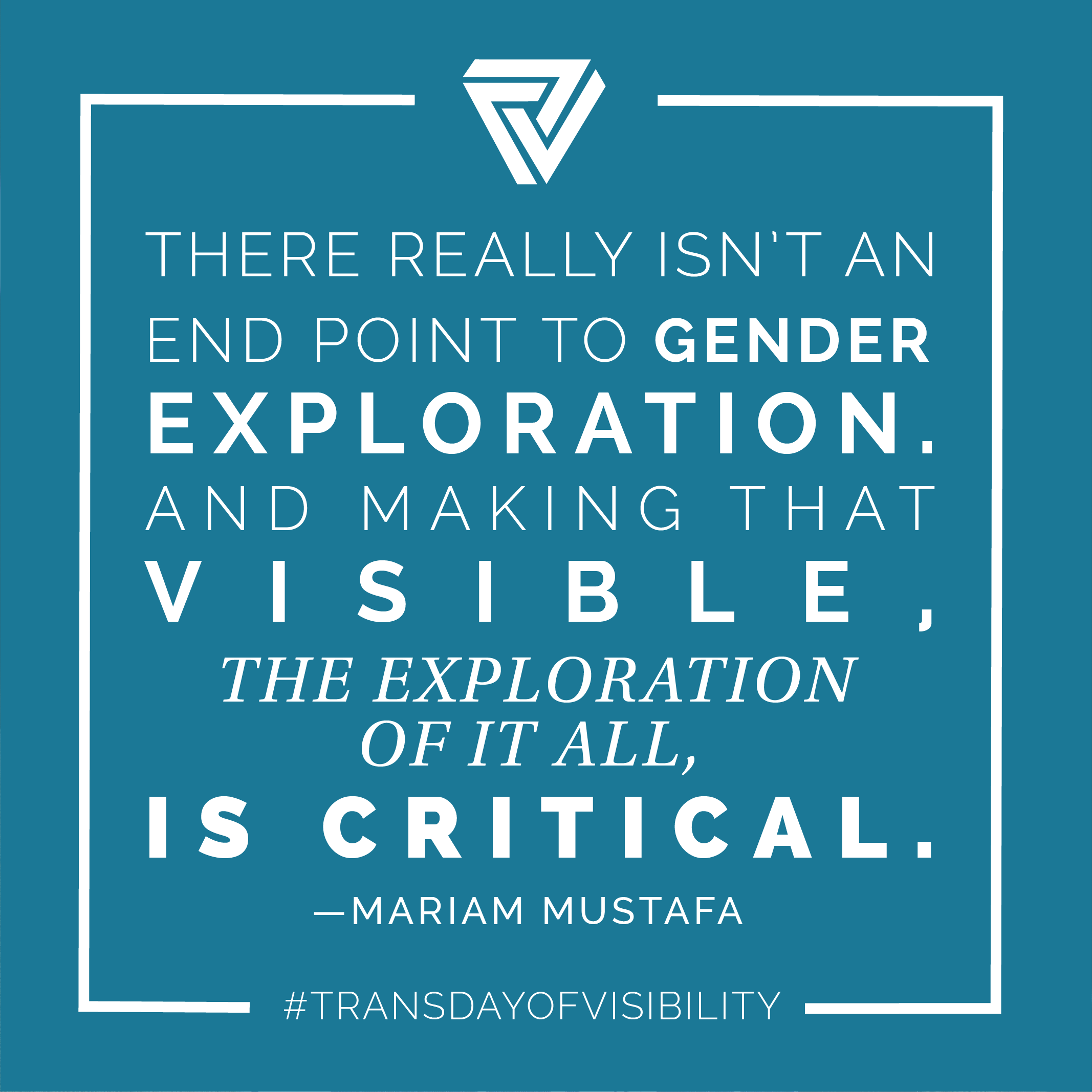A Transgender Day of Visibility guest post
By Mariam Mustafa

Gender is something I try not to think about. I am held in by my own constraints; the way I feel about my body, how that impacts the types of clothes I buy, how I send emails, how I move through this world. I have the gender presentation I want dangling in front of me- the proverbial carrot on a stick motivating me to take better care of myself. But my self-image isn’t just something I use to motivate myself (however unhealthy that may be.) It is also a signal to people: read me this way. I am visible as a _____ person.
Gender is something my partner and I talk about pretty often. Our conversations almost always revolve around the question: at what point do we identify as trans or as gender non-conforming? Before I came out as queer, I never thought twice about my gender. I wasn’t exactly the most comfortable within a cisgender binary, but I didn’t have access to the language to express this. I identified more with movie and television characters who challenged conventional femininity. I assumed that I was just a tough girl, or a girl who could hang with the boys. It never occurred to me that I’m not a girl; that I don’t have to think of myself in that way. It also took some time to unlearn things in binary: just because I am not a girl doesn’t mean I’m a man and, in any case, building an identity purely based off of genitalia seems like the stuff of a Stephen King novel, so why adhere to it anyway? But does this line of thought mean I identify as trans? And if so, what does that mean? Am I gender non-conforming, and what does that entail? Does arriving at an answer to either question always have to mean that something about my presentation, sense of self, or performance needs to change?
My partner has recently been going through similar feelings; they aren’t worried about what pronouns folx use and they have no desire to validate their gender through medical procedures. They’re hesitant to say they’re somewhere on this vast gender spectrum outside of the binary, they’re hesitant to identify as a trans guy, but they aren’t hesitant in knowing that for them, the gender assigned to them at birth wasn’t exactly the correct gender.
Okay, so what’s my point? This is just my experience, and to some extent my partner’s experience. At the end of the day, neither one of us can speak in generalizable terms to TGNC experiences, or for the community. But what I can do with these five hundred words or so is put out what I go through, and maybe that will resonate. My overall point here, is to make visible the process of gender, the various stopping points along the way for folx, and this idea that transness is not an end point. There really isn’t an end point to gender exploration. And making that visible, the exploration of it all, is critical.
Maybe gender is a constant state of flux for some folx, and for that, I have to say that maybe it doesn’t end. But that doesn’t mean it needs to be source of internal stress. I’m learning to really enjoy this gender vortex I’m caught in; and that what I identify as does not have to have some foregone conclusion about what it would take for me to get there. So I say, on Trans Day of Visibility, that those of you who are in flux, in the process of, are not sure of, maybe-kind-of-but-not-really-trans-enough-yet, or wherever you feel you’re at in this whole gender journey, are visible to me. I hear you, I see you, and I support you. Your gender is your gender is YOUR gender. The limit does not exist.
Mariam Mustafa is the climate assessment coordinator of the Midwest Institute for Sexuality and Gender Diversity.